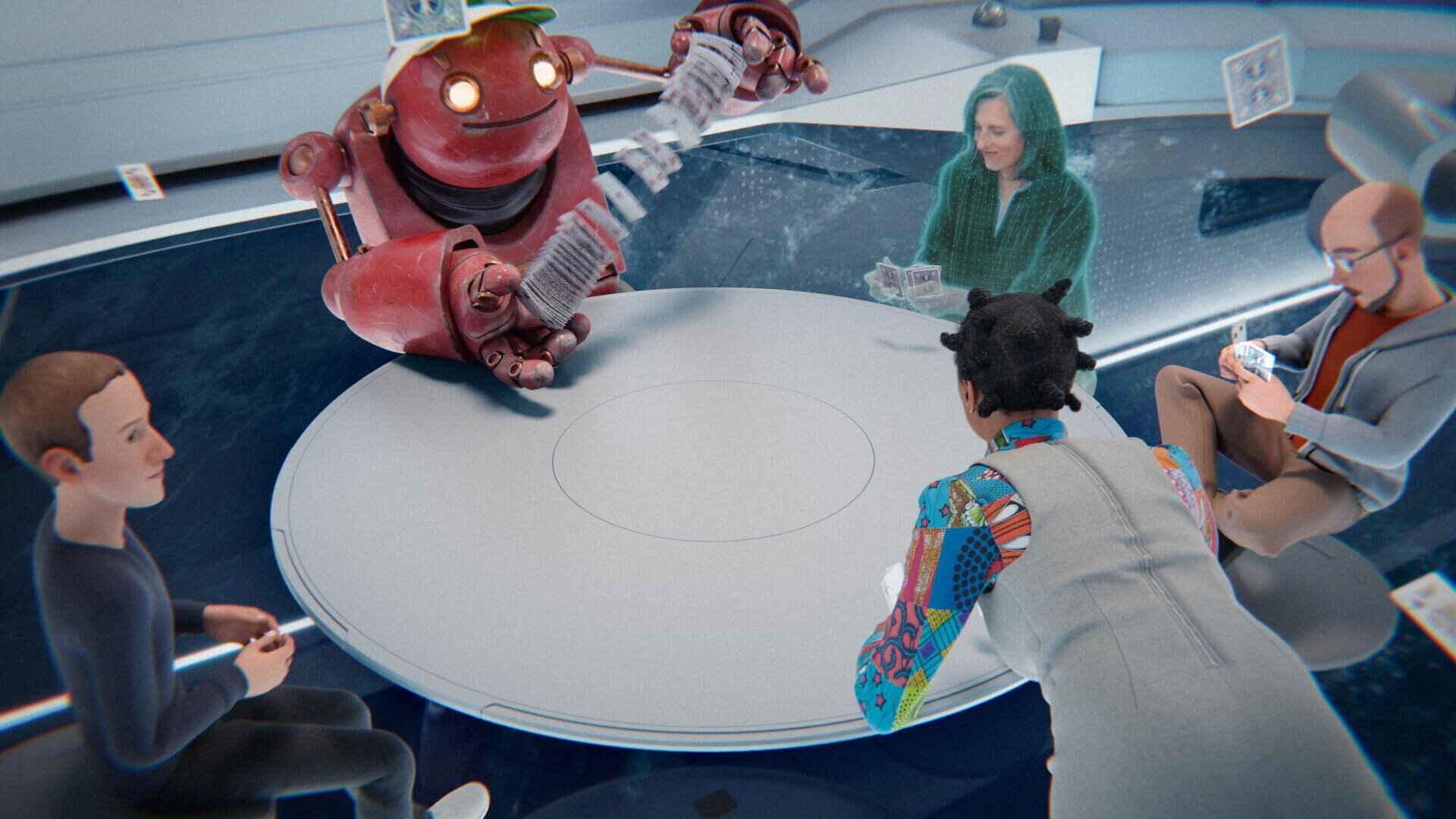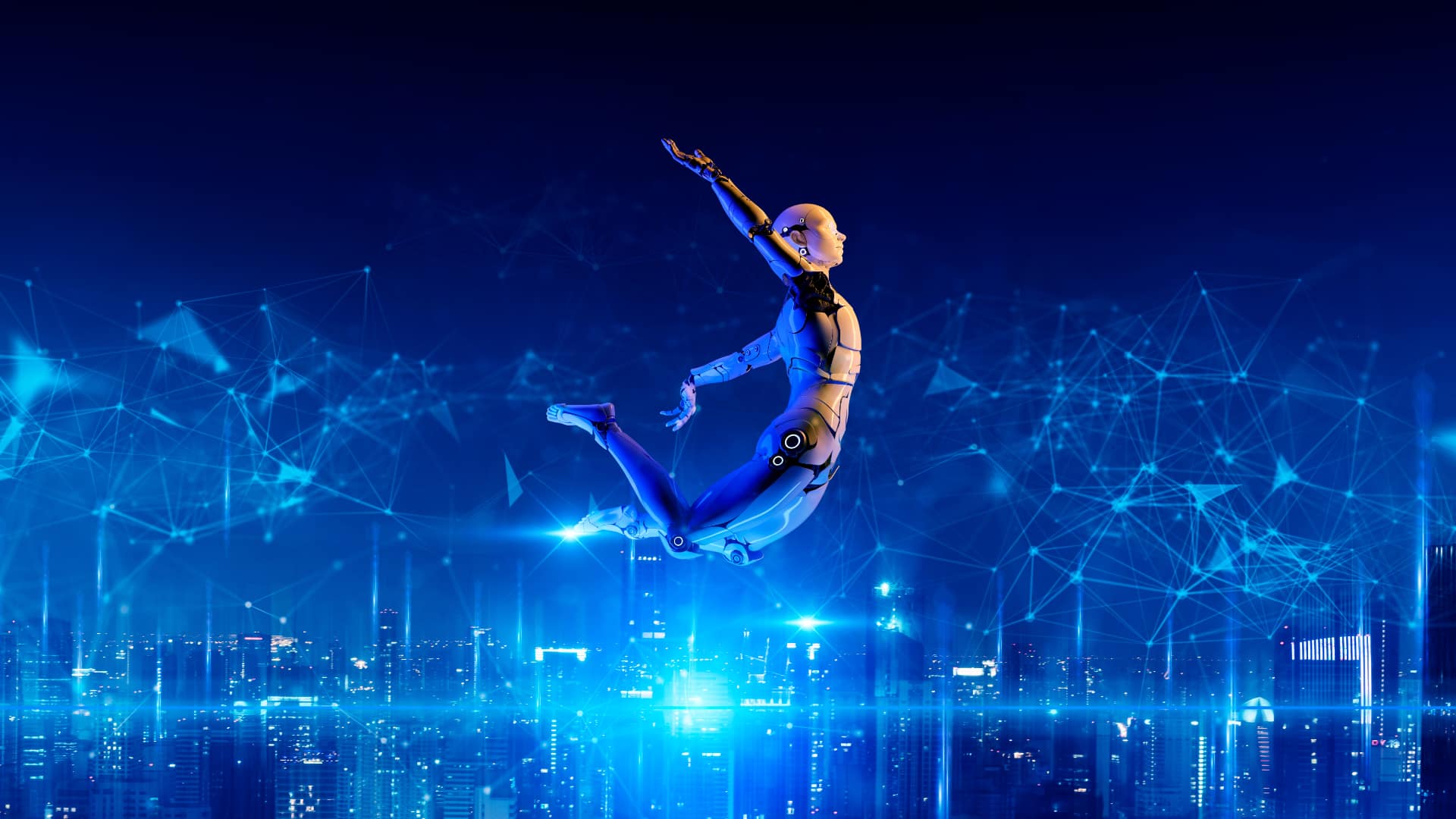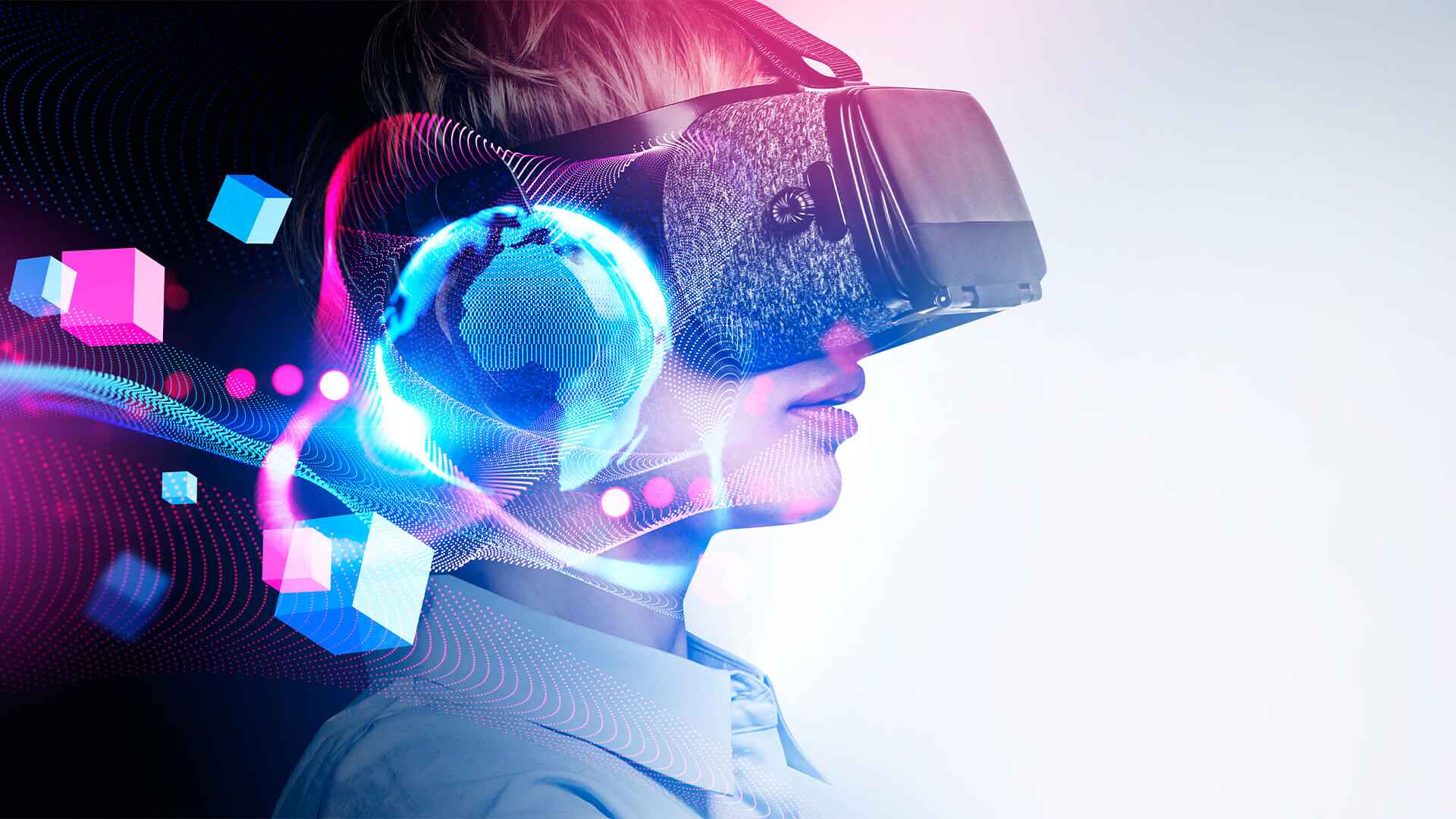Introduction
The concept of the Metaverse has piqued the curiosity and imagination of both technology enthusiasts and the general public. With the growing popularity of virtual reality, augmented reality, and advancements in internet connectivity and computing power, the idea of a fully immersive digital realm where people can interact, create, and explore has become a topic of great interest.
The Metaverse, derived from the terms “meta” (beyond) and “universe,” refers to a virtual universe that can be accessed through various devices and platforms. It goes beyond traditional online experiences and strives to create a seamless and immersive environment where individuals can engage with digital content and interact with other users in a more immersive and lifelike manner.
This concept draws inspiration from science fiction, where virtual realities were envisioned as comprehensive digital worlds where people could live, work, socialize, and experience limitless possibilities. While the current state of technology may not have fully realized this vision, significant strides have been made towards creating elements of the Metaverse.
The Metaverse has the potential to revolutionize various industries, including gaming, entertainment, education, healthcare, and commerce. It holds the promise of transforming how we work, communicate, and interact in the digital realm. However, the development of the Metaverse also poses challenges and raises important ethical considerations that need to be addressed.
In this article, we will delve into the concept of the Metaverse, its historical evolution, key features, potential applications, and the challenges it faces. We will also explore examples of Metaverse platforms, examine its impact on society and the economy, and discuss the ethical considerations that come with its development.
Overall, the Metaverse represents a fascinating frontier of innovation and exploration. It holds the potential to reshape how we perceive and engage with digital environments. As technology continues to advance, it will be intriguing to witness how the concept of the Metaverse evolves and how it transforms our digital experiences.
Definition of the Metaverse
The Metaverse is a term used to describe a virtual universe that encompasses a vast network of interconnected digital spaces where individuals can interact, create, and engage with various forms of digital content. It goes beyond traditional online experiences by providing a more immersive and lifelike environment.
At its core, the Metaverse is an interconnected network of virtual worlds, augmented reality environments, and other digital platforms. It aims to create a sense of presence and immersion by utilizing technologies such as virtual reality (VR), augmented reality (AR), mixed reality (MR), and extended reality (XR) to bridge the gap between the physical and digital worlds.
In the Metaverse, users can explore different digital spaces, interact with other users, and create and modify digital content. It encompasses a wide range of activities, including gaming, socializing, shopping, education, and more. Its foundation lies in the idea of creating an alternate digital reality with its own set of rules, physics, and social dynamics.
One fundamental characteristic of the Metaverse is its persistence. Unlike traditional online experiences, where content is ephemeral, the Metaverse allows for continuous and ongoing development and interaction. Changes made by users or developers can have a lasting impact on the digital environment, creating a sense of evolution and shared experiences.
The Metaverse also emphasizes interoperability, meaning that users can seamlessly navigate across different platforms and worlds without the need for separate accounts or interfaces. This interoperability fosters a sense of interconnectedness and allows for the exchange of digital assets and experiences between different users and platforms.
It is important to note that the concept of the Metaverse is still evolving, and there is no universally accepted definition. Different interpretations and implementations exist, and the boundaries of what constitutes the Metaverse are continually expanding as technology advances.
Overall, the Metaverse can be seen as a digital parallel to the physical world, a space that offers endless possibilities for exploration, creation, and social interaction. It aims to redefine how we engage with digital content and how we interact with others in the virtual realm.
Historical Evolution
The concept of the Metaverse has its roots in early science fiction literature and has evolved along with advancements in technology. While the current state of the Metaverse may not fully resemble the futuristic worlds depicted in books and movies, it has undergone significant developments over the years.
The idea of a virtual reality-based existence was initially popularized by science fiction author Neal Stephenson in his 1992 novel, “Snow Crash.” Stephenson’s vision portrayed a future where individuals could escape their current reality and enter a virtual realm known as the Metaverse. This fictional world was highly immersive and allowed users to interact with others, engage in commerce, and explore unique digital environments.
Following the publication of “Snow Crash,” various technology companies and researchers began to explore the feasibility of creating a real-world version of the Metaverse. The advent of the internet provided a crucial foundation for these efforts, as it facilitated global connectivity and the sharing of digital content.
In the early 2000s, virtual worlds such as Second Life gained popularity, offering users the ability to create avatars and interact with others in a virtual space. While these platforms provided a glimpse into the possibilities of virtual worlds, they fell short of fully realizing the concept of the Metaverse due to limitations in technology and user experience.
In recent years, technological advancements in virtual reality, augmented reality, and other immersive technologies have propelled the development of the Metaverse. VR headsets like the Oculus Rift and HTC Vive have made virtual reality experiences more accessible and immersive, while augmented reality platforms like Pokemon Go have brought AR to the mainstream.
Furthermore, advancements in cloud computing, high-speed internet connectivity, and artificial intelligence have laid the groundwork for a more interconnected and immersive digital realm. With the development of blockchain technology, digital assets can now be securely owned and transferred, enabling the creation and exchange of virtual goods within the Metaverse.
Notably, major tech companies such as Facebook, Microsoft, and Epic Games are heavily invested in the development of the Metaverse. They are working on building immersive platforms, creating virtual reality experiences, and fostering developer communities to support the growth of the digital universe.
While the concept of the Metaverse is still in its early stages, it is clear that the pursuit of creating a fully realized digital reality has gained significant traction. The historical evolution of the Metaverse highlights the iterative nature of technological development and the increasing convergence of the physical and digital worlds.
Key Features
The Metaverse encompasses a set of key features that distinguish it from traditional online experiences. These features contribute to creating a more immersive, interconnected, and dynamic digital universe. Let’s explore the key features of the Metaverse:
- Virtual Worlds: The Metaverse consists of various virtual worlds, each with its own unique setting and characteristics. Users can navigate and explore these digital environments, interacting with objects and other users.
- Interactivity: Interactivity is a fundamental aspect of the Metaverse. Users can interact with virtual objects, manipulate the environment, and engage in social interactions with other users. This interactivity goes beyond traditional web browsing and allows for real-time collaboration and engagement.
- Avatar Creation: Users in the Metaverse have the ability to create and customize their avatars, representing their digital personas. Avatars serve as a means of self-expression and identity within the virtual world.
- Virtual Commerce: The Metaverse includes a virtual economy where users can buy, sell, and trade digital assets and services. This virtual commerce ecosystem allows for the creation of virtual goods, digital currencies, and marketplaces.
- Persistence: Unlike traditional online experiences where content is ephemeral, the Metaverse offers persistence. Changes made by users or developers in the virtual environment have a lasting impact, creating an evolving and continuously developing realm.
- Interoperability: Interoperability is a crucial aspect of the Metaverse. It enables seamless interactions and transitions between different virtual worlds and platforms, allowing users to navigate and engage across diverse digital spaces.
- Social Interaction: Social interaction is at the core of the Metaverse experience. Users can connect with friends, join communities, participate in events, and collaborate on projects. Socialization within the Metaverse aims to replicate and enhance real-life social dynamics.
- Augmented Reality Integration: The integration of augmented reality (AR) technologies enhances the Metaverse by overlaying digital content onto the physical world. AR features can provide contextual information, enhance real-life experiences, and bridge the gap between physical and virtual realms.
These key features collectively contribute to the immersive and dynamic nature of the Metaverse. They enable users to explore and interact with digital spaces and content in ways that were previously unimaginable. As technology continues to evolve, these features will likely become more refined and sophisticated, further blurring the boundaries between the physical and digital worlds.
Potential Applications
The Metaverse holds immense potential for a wide range of applications across various industries. Its immersive and interactive nature opens up countless possibilities for transforming how we work, learn, entertain, and interact. Let’s explore some of the potential applications of the Metaverse:
- Gaming and Entertainment: The gaming industry is one of the immediate beneficiaries of the Metaverse. It allows for more immersive and realistic gaming experiences, as players can enter virtual worlds, interact with other gamers, and participate in collaborative gameplay. Additionally, the entertainment industry can leverage the Metaverse for virtual concerts, immersive storytelling experiences, and interactive events.
- E-commerce: The Metaverse has the potential to revolutionize the e-commerce industry. Virtual marketplaces within the Metaverse can offer a unique shopping experience, where users can browse and purchase digital and physical goods. Virtual showrooms and augmented reality try-on features can enhance the online shopping experience, allowing users to visualize products before making a purchase.
- Virtual Workspaces: The Metaverse can reimagine how we work and collaborate. Virtual workspaces offer the opportunity for remote work and virtual meetings in immersive environments. Teams can collaborate in virtual offices, host presentations, and leverage the Metaverse’s interactive features for enhanced productivity.
- Education and Training: The Metaverse has the potential to transform education and training by providing immersive and interactive learning experiences. Virtual classrooms, simulations, and training environments can offer hands-on learning opportunities in a safe and controlled setting. Students can explore historical events, conduct virtual experiments, and engage in collaborative projects, fostering a deeper understanding of the subject matter.
- Socializing and Networking: The Metaverse offers new avenues for social interaction and networking. Virtual gatherings, events, and communities within the Metaverse enable individuals to connect with like-minded individuals across geographical boundaries. It can also provide an inclusive space for people with disabilities or those who face limitations in physical mobility.
- Healthcare: The Metaverse has the potential to revolutionize healthcare delivery. Virtual clinics and telehealth services can offer greater access to healthcare professionals, remote patient monitoring, and virtual rehabilitation programs. Virtual reality can also be utilized for pain management, mental health therapy, and phobia treatments.
- Architecture and Design: Architects and designers can benefit from the Metaverse by creating virtual environments for client presentations and immersive walkthroughs. The integration of augmented reality can allow clients to visualize and experience architectural designs in real-world settings.
- Exploration and Tourism: The Metaverse can provide virtual tourism experiences, allowing users to explore landmarks, historical sites, and natural wonders from the comfort of their homes. Virtual travel can provide educational and enriching experiences while reducing the environmental impact of physical travel.
These are just a few examples of the potential applications of the Metaverse. As technology continues to advance and innovation flourishes, it is likely that we will witness even more diverse and impactful uses of the Metaverse across industries. It holds the potential to reshape how we learn, work, entertain ourselves, and connect with others in the digital realm.
Challenges and Limitations
While the concept of the Metaverse presents numerous possibilities, it also faces several challenges and limitations. It is important to recognize these aspects to ensure responsible development and implementation. Let’s explore some of the key challenges and limitations associated with the Metaverse:
- Technical Complexity: Building a fully realized Metaverse requires complex technological infrastructure, including high-speed internet connectivity, advanced computing power, and seamless interoperability. Achieving a seamless user experience across different platforms and devices poses significant technical challenges.
- Privacy and Security: The Metaverse raises concerns regarding privacy and security. As users interact and share personal information in immersive environments, safeguarding privacy becomes crucial. Additionally, ensuring secure transactions, preventing unauthorized access, and addressing potential cyber threats are vital considerations in the development of the Metaverse.
- Accessibility: Ensuring equal access to the Metaverse for individuals with disabilities or those from underserved communities is a challenge. Developers must design and create inclusive environments that consider the diverse needs of all users to promote accessibility and avoid further marginalization.
- Content Moderation: The Metaverse will require robust content moderation systems to prevent the spread of harmful or inappropriate content. Establishing guidelines and mechanisms to filter and regulate user-generated content is essential to maintain a safe and enjoyable environment for all participants.
- Legal and Ethical Considerations: The development of the Metaverse raises legal and ethical considerations. Issues surrounding intellectual property rights, digital ownership, data privacy, and consent need to be carefully addressed to ensure fair and responsible usage of the Metaverse.
- Digital Divide: Bridging the digital divide is crucial for widespread access to the Metaverse. Unequal access to technology, internet connectivity, and digital literacy can create disparities and limit participation in the digital universe. Efforts should be made to ensure equitable access and promote inclusivity.
- User Behavior and Addiction: The immersive and addictive nature of the Metaverse can give rise to concerns surrounding user behavior and addiction. It is essential to educate users about responsible usage, set healthy boundaries, and implement measures to prevent excessive dependence and negative consequences.
- Dependence on Technology: The reliance on technology for the Metaverse can pose potential risks in terms of system failures, cybersecurity threats, and data breaches. As society becomes increasingly dependent on the Metaverse, contingency plans and backup systems must be in place to mitigate such risks.
Addressing these challenges and limitations requires collaboration among technology developers, policymakers, and users. By proactively addressing these issues, we can work towards the responsible and sustainable development of the Metaverse, ensuring that it benefits individuals and communities in a fair and equitable manner.
Examples of Metaverse Platforms
While the concept of the Metaverse is still evolving, several platforms and projects are pushing the boundaries of what is possible in creating immersive and interconnected digital worlds. Here are some notable examples of Metaverse platforms:
- Roblox: Roblox is a user-generated online gaming platform that allows users to create and play games within the Roblox universe. It boasts millions of user-created games and experiences, making it a popular platform for fostering creativity and social interaction.
- Decentraland: Decentraland is a blockchain-based virtual world where users can buy, sell, and trade virtual LAND, which represents digital real estate. Users can create and monetize their virtual creations and experiences within this user-owned virtual world.
- Fortnite: Fortnite, developed by Epic Games, is a popular battle royale game that has expanded beyond traditional gaming. It has evolved into a social platform where players can engage in virtual concerts, movie screenings, and virtual events, blurring the lines between gaming and entertainment.
- Second Life: Second Life is a long-standing virtual world where users can create avatars, explore diverse virtual environments, and engage in various activities such as socializing, shopping, and attending virtual events. It has been a pioneer in the virtual world space and continues to foster a vibrant virtual community.
- Facebook Horizon: Facebook Horizon is an upcoming social virtual reality platform being developed by Facebook. It aims to enable users to create and explore immersive virtual worlds, interact with others, and build communities within the virtual space.
- Minecraft: Minecraft is a popular sandbox game that has evolved into a creative platform. Players can build and explore virtual worlds, collaborate on projects, and even recreate real-life architectural marvels, making it a prime example of user-generated content in a virtual universe.
- VRChat: VRChat is a social platform where users can interact with others in virtual reality. It offers a variety of virtual environments and avatars, facilitating socialization, creativity, and community building.
- OpenSimulator: OpenSimulator is an open-source virtual world platform that allows users to create their own virtual worlds. It provides a framework for developers and enthusiasts to experiment and build their custom virtual experiences.
These examples showcase the diverse range of platforms exploring the concept of the Metaverse. Each platform offers unique features and opportunities for users to engage, create, and connect within immersive digital environments. As technology continues to advance, we can expect to see even more innovative platforms and projects shaping the future of the Metaverse.
Impact on Society and Economy
The emergence of the Metaverse has the potential to bring about significant impacts on both society and the economy. As this digital universe expands and becomes more integrated into our daily lives, it is essential to consider the broader implications. Let’s explore the potential impact of the Metaverse:
- Social Interaction and Connectivity: The Metaverse can revolutionize how we interact and connect with others. It offers opportunities for people from different parts of the world to come together, fostering global collaboration, cultural exchange, and a deeper sense of connection.
- Work and Employment: The Metaverse can transform how we work and collaborate. Virtual workspaces and remote collaboration within the Metaverse can provide flexibility, reduced commuting, and new employment opportunities in areas such as virtual event management, virtual design, and virtual commerce.
- E-commerce and Digital Economy: The Metaverse has the potential to disrupt the traditional e-commerce landscape. Virtual marketplaces and digital currencies within the Metaverse can drive new business models, virtual storefronts, and innovative ways of buying and selling goods and services.
- Entertainment and Media: The Metaverse presents new possibilities for entertainment and media consumption. Virtual concerts, interactive storytelling experiences, and immersive content can reshape the entertainment industry and create new avenues for creative expression.
- Education and Learning: The Metaverse can revolutionize education by offering immersive and interactive learning experiences. Virtual classrooms, simulations, and collaborative projects within the Metaverse can provide students with engaging and hands-on learning opportunities.
- Healthcare and Well-being: The Metaverse can have an impact on healthcare by enabling virtual clinics, remote patient monitoring, and mental health therapies. It can also provide opportunities for virtual support groups and interventions for people facing physical or geographical limitations.
- Environment and Sustainability: The Metaverse has the potential to contribute to environmental sustainability. Virtual travel and virtual experiences can reduce carbon emissions associated with physical travel, while promoting cultural exchange and reducing the strain on natural resources.
- Accessibility and Inclusivity: The Metaverse has the potential to increase accessibility and inclusivity. It can provide opportunities for people with disabilities to engage in activities and experiences that may be challenging in the physical world, promoting a more inclusive and equal society.
These are just a few examples of the potential impacts of the Metaverse. As this digital universe continues to evolve, it is crucial to proactively address and leverage the positive impacts while also addressing the challenges that arise. By responsibly harnessing the potential of the Metaverse, we can shape a future where technology enhances our lives, fosters connectivity, and drives economic growth.
Ethical Considerations
The development and implementation of the Metaverse raise important ethical considerations that must be addressed to ensure responsible and inclusive digital environments. As this technology evolves and becomes more integrated into our lives, it is crucial to consider the following ethical considerations:
- Privacy and Data Protection: The Metaverse collects vast amounts of user data, including personal information and behavioral patterns. Safeguarding user privacy and implementing robust data protection measures are essential to prevent misuse and unauthorized access to sensitive information.
- Equitable Access and Inclusion: Ensuring equitable access and inclusion within the Metaverse is crucial. Efforts should be made to bridge the digital divide, provide equal opportunities for participation, and minimize barriers for individuals from marginalized communities or those with disabilities.
- Content Moderation: The Metaverse demands effective and responsible content moderation systems. Implementing guidelines and mechanisms to combat hate speech, harassment, and the spread of misinformation is crucial to maintain a safe and welcoming environment for all users.
- Intellectual Property Rights: Protecting intellectual property rights within the Metaverse is vital. Developers and content creators should have their work duly recognized, rewarded, and protected to encourage innovation while respecting existing copyright laws and ethical frameworks.
- Ethical Use of Artificial Intelligence: As AI plays a role in powering the Metaverse, ethical considerations must be taken into account. Creating ethical frameworks and guidelines for AI implementation can address concerns related to bias, privacy, transparency, and accountability.
- Corporate Responsibility: Companies driving the development of the Metaverse must uphold ethical responsibilities. This includes transparency in data collection, security measures, and fair business practices that respect user rights, foster diversity, and contribute positively to society.
- Human vs. Digital Interactions: Balancing human and digital interactions within the Metaverse is essential. Maintaining authentic human connections and ensuring that digital experiences do not replace real-life interactions are important considerations in navigating the ethical landscape of the Metaverse.
- Addiction and Mental Well-being: The addictive nature of the Metaverse presents ethical concerns. It is crucial to educate users about responsible usage, promote digital well-being, and ensure that individuals are not excessively dependent on virtual experiences at the expense of their well-being and offline lives.
Addressing these ethical considerations requires collaboration among stakeholders, including technology developers, policymakers, researchers, and user communities. By prioritizing ethical principles, we can strive to create a Metaverse that is inclusive, respects user rights, fosters diversity, and contributes positively to society.
Conclusion
The concept of the Metaverse represents a fascinating frontier of innovation and exploration. As we continue to witness advances in virtual reality, augmented reality, and other immersive technologies, the vision of a fully immersive digital universe where people can interact, create, and explore edges closer to reality.
The Metaverse holds the potential to revolutionize various industries and aspects of our lives. From gaming and entertainment to education, healthcare, and commerce, it offers limitless possibilities for transforming how we work, communicate, learn, entertain, and connect with others in the digital realm.
However, the development of the Metaverse also presents challenges and raises important ethical considerations. Issues such as privacy, equitable access, content moderation, intellectual property rights, and the responsible use of AI need to be addressed to ensure that the Metaverse is developed and implemented in a responsible, inclusive, and ethical manner.
The historical evolution of the Metaverse reflects the iterative nature of technological development, starting from early science fiction visions to today’s immersive experiences. It is an ongoing journey, shaped by advancements in technology, user demand, and societal awareness.
As the Metaverse continues to evolve, it is crucial for technology developers, policymakers, and users to collaborate in addressing these challenges and shaping the future of this digital universe. By fostering responsible development, promoting inclusivity, and upholding ethical principles, we can harness the potential of the Metaverse to create a future where technology enhances our lives and enables new possibilities for connection, creativity, and collaboration.
The impact of the Metaverse on society and the economy is vast and far-reaching. It has the potential to reshape how we work, learn, entertain, and engage with each other. By embracing the opportunities and addressing the challenges, we can ensure that the Metaverse contributes positively to society, fosters innovation, and brings about a more connected and immersive digital future.

























